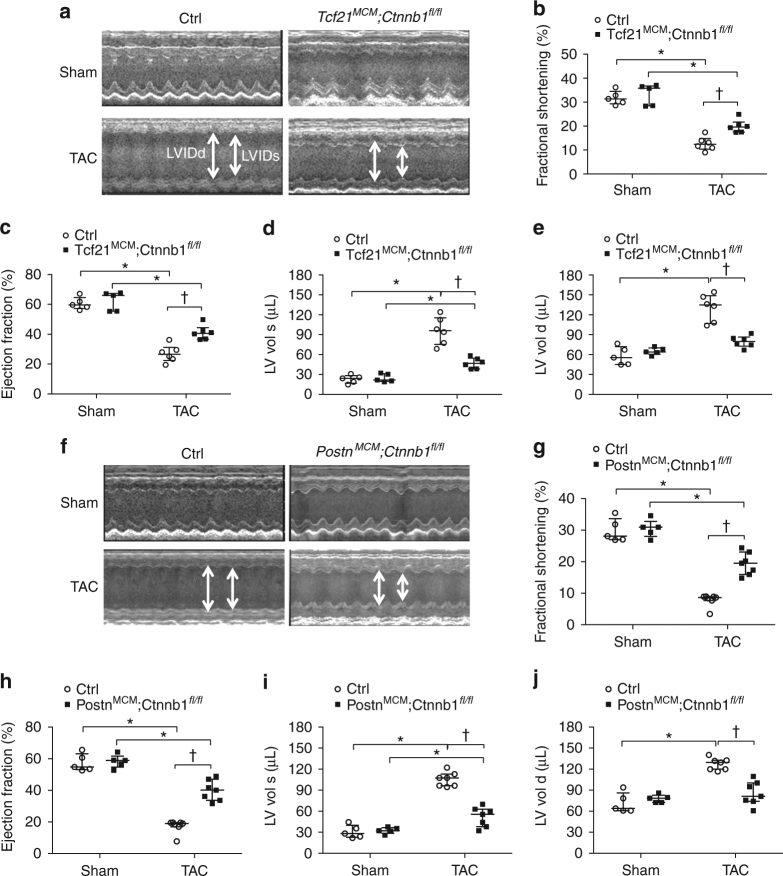Fig. 2.
Loss of β-catenin in Tcf21 or Postn CF lineages leads to improved cardiac function 8 weeks post TAC. Tcf21 MCM ;Ctnnb1 fl/fl and Postn MCM ;Ctnnb1 fl/fl mice with corresponding Cre-negative controls were subjected to sham or TAC operations. Cre-activity was induced by TAM food for 8 weeks from day 0 after operation, and cardiac function was measured by echocardiography. Representative M-mode tracing for Tcf21 MCM ;Ctnnb1 fl/fl (a) and Postn MCM ;Ctnnb1 fl/fl (f) with corresponding Cre-negative controls at 8 weeks post sham or TAC operations are shown. Arrows indicate left ventricular internal diameter end diastole (LVIDd, left) and end systole (LVIDs, right). b, g Fractional shortening (FS), (c, h) ejection fraction (EF), (d, i) LV systolic (LV Vol s), and (e, j) LV diastolic volume (LV Vol d) were quantified. No differences were observed between sham groups. TAC significantly impaired cardiac function compared to sham control after 8 weeks. Compared to Cre-negative littermate controls, FS, EF, and LV Vol were significantly improved in both Tcf21 MCM ;Ctnnb1 fl/fl (b–e) and Postn MCM ;Ctnnb1 fl/fl (g–j) mice at 8 weeks post TAC. Data points are shown with median and interquartile ranges indicated. Statistical significance was determined by Kruskal–Wallis tests followed Mann–Whitney U tests for pairwise comparisons using Bonferonni adjustments to control for multiple testing. *P < 0.05 vs. Sham, † P < 0.05 vs. Control TAC. N = 5–7 mice per group

